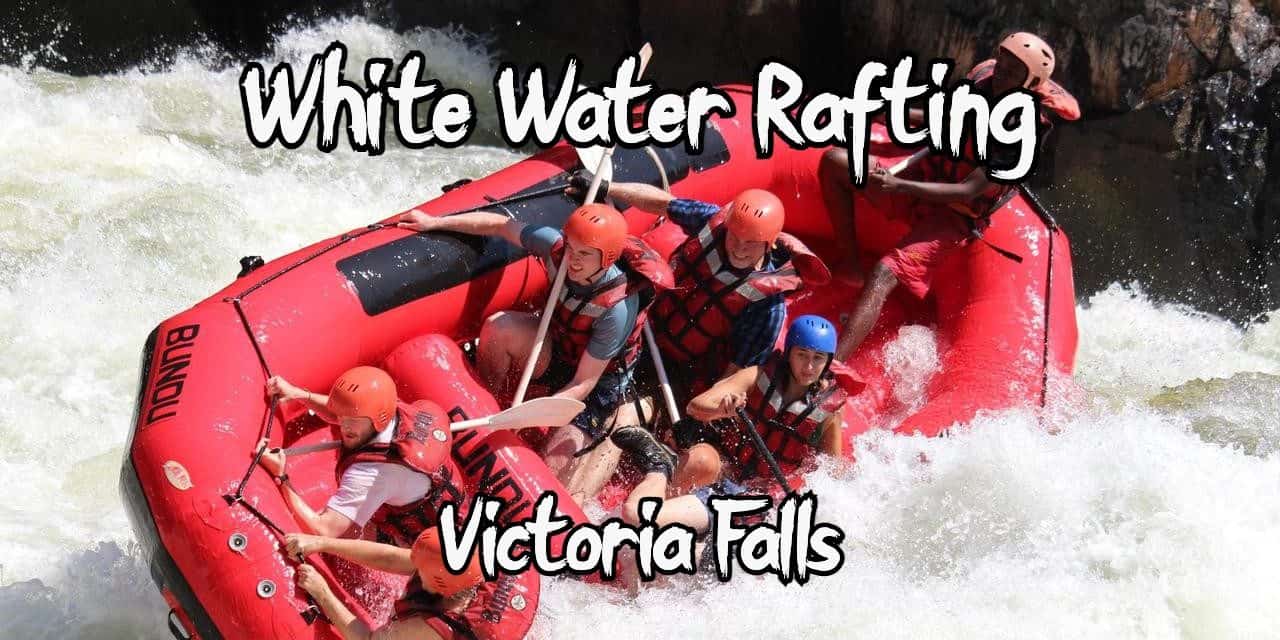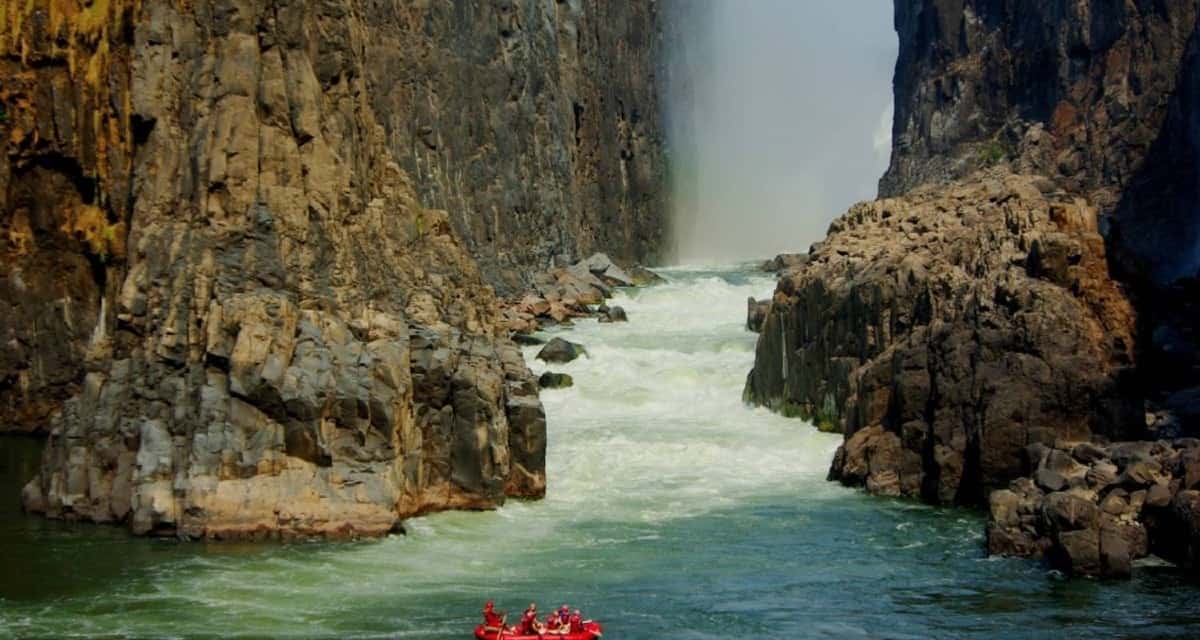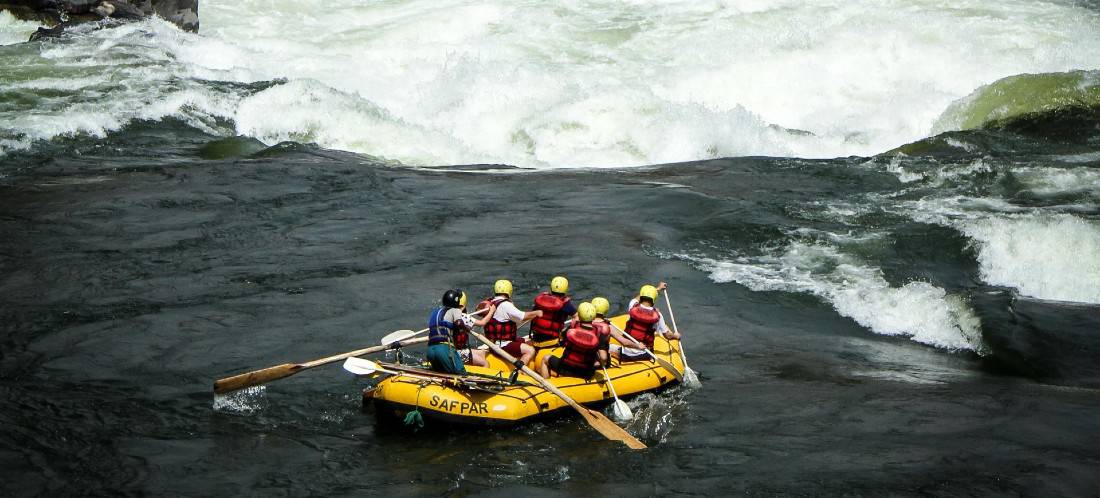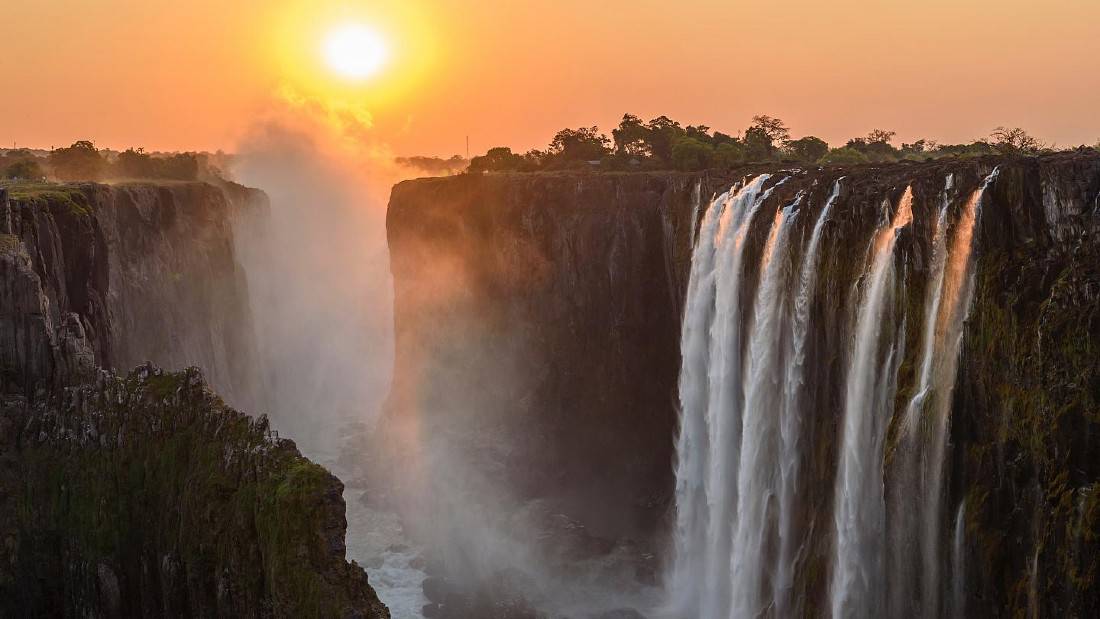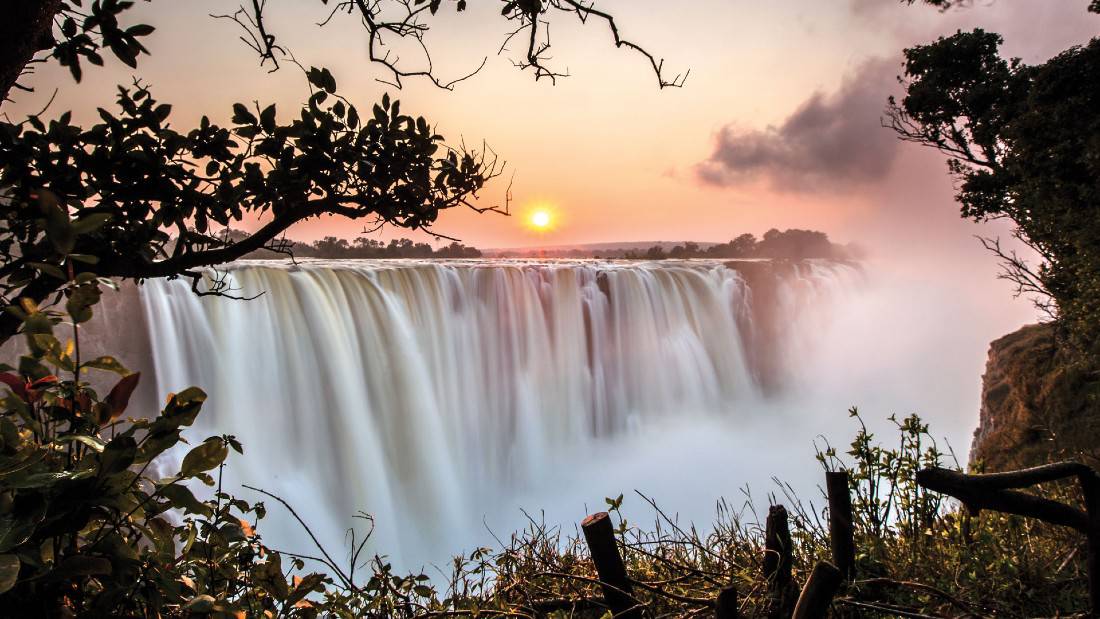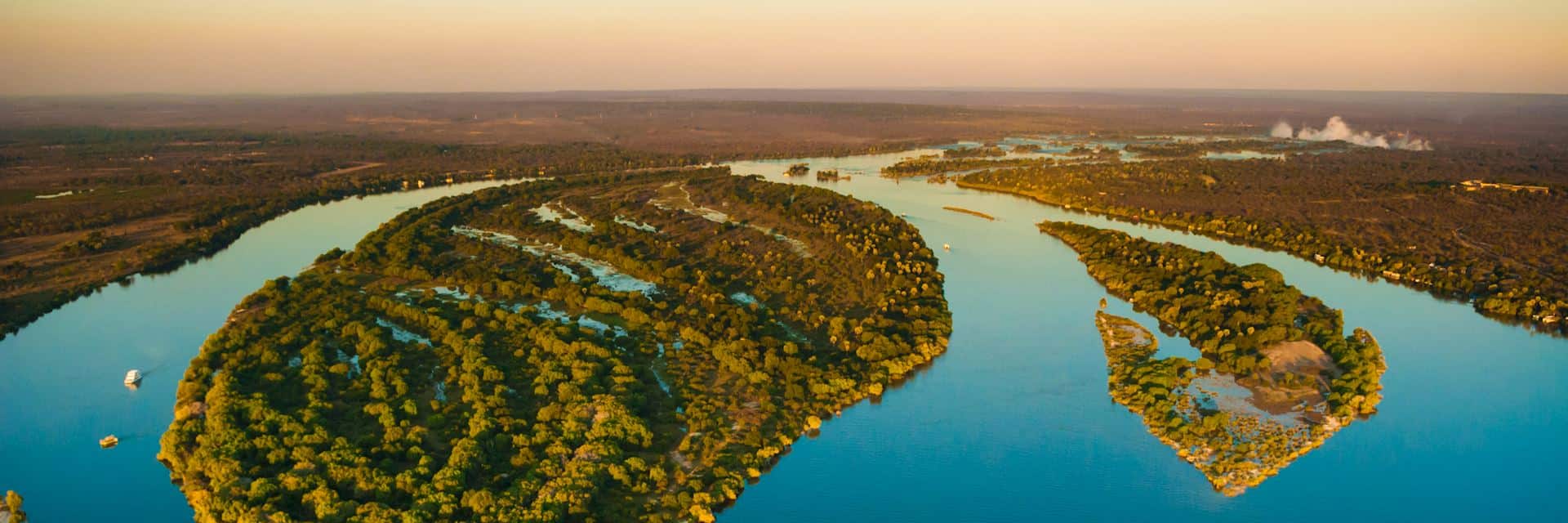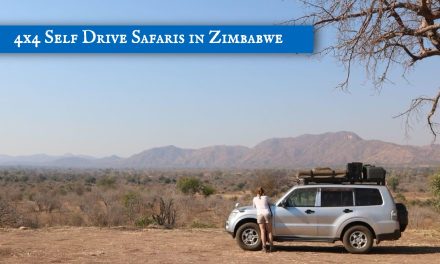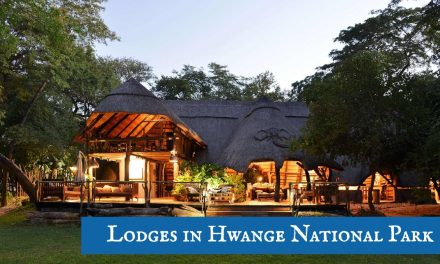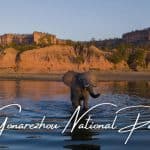Table of Contents
Guide to White Water Rafting in Victoria Falls, Zimbabwe
You can experience the most spectacular waterfall in the world, and see it up close and personal by going White Water Rafting in Victoria Falls. There are two types of rafting: one for beginners, and another for advanced white water rafter teams. Grade III rapids are more difficult than Grade IV rapids, and they include Gullivers Travels, Creamy-White Buttocks, and The 3 Ugly Sisters.
You can book your own private rafting adventure in advance. This activity is closed only when the water level is too high, so make sure to book early. You will also need to check the water levels before going on a trip. Depending on the time of year, the water levels of Victoria Falls may fluctuate and be unsafe for rafting. If you can’t make it out in the middle of June, you can always try a private tour and enjoy the sunset on the river.
White Water Rafting Adventure
The Victoria Falls White Water Rafting adventure starts after breakfast. You will receive safety training from your guides and will be issued with an indemnity form before boarding the raft. You will be transported to the gorge by hiking. The rafting journey takes approximately two hours, and it passes through a series of rapids and stretches of calm water in between. During this time, you will have time to chat with fellow rafter crew members, take pictures, and observe wildlife.
When is the best time to go White Water Rafting in Victoria Falls? During high-water seasons, it is best to visit the waterfall during the dry season. The rapids of the Zambezi River are famous and iconic. If you can’t wait, then consider booking your trip during off-peak season. A guide will be able to help you prepare for the river and the waterfalls. However, be aware that you’ll need to be in moderately good shape.
During the high water season, white water rafting in Victoria Falls is available all year long. You can book your trip online or at the gorge. Once you’ve made your booking, you’ll be taken to the gorge below the waterfall. The rafting adventure is very exciting and will leave you with amazing memories of the gorge. The only thing to keep in mind is that it’s essential to be in good health to go rafting in Victoria Falls.
To make the most of your trip, you should be prepared to be in a hurry. The Zambezi River is the most famous river in the world, and it is a mile-long gorge that is home to 24 fearsome rapids. A team of rafters should be well-prepared and be prepared for the unexpected. A professional oarsman is responsible for keeping the boats in perfect condition during this 15-minute experience.
The water levels in the gorge are usually high, so it’s important to wear waterproof shoes when going rafting. In addition, you should be comfortable wearing rafting shoes. If you’re going during the winter months, you’ll need to wear a wet suit. In case the water level is high, a wet suit will be provided for you. During the summer, you can opt for a low water rafting tour of the gorge.
After booking a white water rafting Vic Falls tour online, you’ll receive a safety briefing and meet your guide. Once you’re seated in the raft, you’ll take your first paddle out, a moment that will last forever in your memory. If you’re brave enough, you’ll be able to experience the thrill of a lifetime. While the river is a challenging and thrilling activity, it’s also great for a family vacation!
The most exciting part of the trip is the adventure itself. During your white water rafting Victoria Falls tour, you’ll experience the most beautiful waterfall in the world and the most scenic scenery. You’ll enjoy the breathtaking views of the falls and the gorge along the way. You’ll have to get in shape and make sure you’re physically fit enough to do the activity. The tour lasts about four hours.
Best Time for White Water Rafting in Victoria Falls
The best time for white water rafting in Victoria Falls is between December and March. This is the rainy season, so you’ll have a greater chance of seeing spectacular rainbows. You’ll also have a better chance of controlling your raft during the rapids, which are more difficult to navigate when the water is low. To avoid this problem, plan your trip during the low-water season, which lasts from December to February.
The river is at its lowest between July and mid-January. The river is at its lowest during this period, and therefore, there are more rapids. However, the best time to go for a rafting trip here is between July and mid-January. The water levels are higher during these times, and there’s a good chance that you’ll catch the falls in full view. If you’re not sure whether the weather will be suitable, check the water level first.
The best time for white water rafting in Victoria Falls is between September and November. The temperature is still warm at these times, so a mid-October visit is ideal. The volume of water in the Batoka Gorge is relatively low, so you’ll want to get there early. During the dry months, you’ll have better visibility, which will make wildlife viewing more fun. The Devil’s Pool is open from September to November.
Best Time to Visit Victoria Falls
There is no ‘one’ best time to visit Victoria Falls. In fact, there is no one period of the year that is better than the next. You should consider visiting the falls in all four seasons, and try to avoid the peak months of April and May. You can also choose to visit during the dry season from September to November. However, if you are visiting Victoria during the wet season, you should know that the water levels will be lower.
The best time to visit Victoria Falls is in spring or early fall when the water levels are at their highest. The hottest months are from September to November when temperatures can reach 90 degrees Fahrenheit. December through April are the driest months, while May and August have the lowest temperatures. This is the perfect time to go to Victoria Falls as you can enjoy the view from its widest point. You can even experience whitewater rafting on the Zambezi River, which has earned its reputation as the world’s wildest river. You can also visit Devil’s Pool during this time, where you can frolic in a pool of water that appears in the distance.
The best time to visit Victoria Falls depends on the weather and the time of the year. During the rainy season, the river levels are at their highest and the waterfall is at its highest. In autumn, flowering plants and animals abound, and kudu and buffalo are at their peak in autumn. The migratory birds start to depart for the winter months. During the winter months, Victoria Falls are closed from November to February.
The best time to visit the Falls is after the summer rains. During the winter months, the Falls do not receive much rainfall and are therefore unable to collect much steam. When the water is at its highest, you can enjoy whitewater rafting in the Zambezi River, but the spray from the falls will make you drenched. In summer, the water level is the lowest, which makes for a more pleasant experience.
The best time to visit Victoria Falls depends on the season. The hottest months are from October to March when the waterfall’s water levels are low and the temperature reaches 100degF. In August, it is the wettest month, and it is also the wettest season. This makes August the ideal time to visit the falls. There are several factors to consider when planning a trip to the falls, including the weather and temperature.
The best time to visit Victoria Falls is after the summer rains. The falls have their largest volume during this time, and their steam is the best time to visit. A visit during this time is a sensory overload. Heat, steam, and moisture are all present in this natural wonder. The atmosphere is so unique, you may want to stay for a while to soak in the experience. The best time to visit Victoria Falls is the most appropriate time for you.
In addition to enjoying the falls, you can also enjoy the view of the waterfall in the evening. The full moon brings the most spectacular view of the falls, but you should plan to stay at least three nights to catch the moonbow effect. If you have the time, you should visit the falls on a full moon night. It’s a great way to experience the water’s power. It is also the best time to experience the spectacular thunderous spray of Victoria Falls.
The best time to visit Victoria Falls depends on the season you choose. You can visit the falls any time of the year, but the best time to go is between August and December. It has three distinct seasons, each of which provides unique opportunities. During the dry season, the devil’s pool closes for about six months, while the rest of the year, the water levels are low. Aside from the falls, you can also go on a safari and take a boat ride on the upper Zambezi River.
Worst Time to Visit Victoria Falls
If you’re planning a trip to Victoria Falls, you may be wondering when is the best time to visit. In fact, there are a few good times to visit, depending on your interests. The peak season is April and May. If you’re looking for wildlife viewing, then the dry months are ideal. You’ll have the option of going on a safari or enjoying a scenic hike, and you can even catch a glimpse of the local wildlife.
The worst time to visit Victoria Falls depends on your personal preferences. The spray is twice as powerful in August and December when the Zambezi River is swollen and starting its dry season. However, summer rain still makes its way down the Zambezi River and into the falls. You’ll want to visit the Falls during these months to experience the power of this waterfall. Nevertheless, it’s not recommended to visit the waterfall during these months, when the water flow is at its lowest.
The best time to visit Victoria Falls is between April and May. This is the time when the water flow is at its highest, allowing for the biggest view of the roaring waterfall. During this time, you’ll be able to see the Falls from below, and the spray from the roaring waters reaches up to 22 miles and 35 kilometres. This season is also ideal for wildlife viewing.
November and October are the warmest months to visit the falls. Temperatures will rise to 30-35 degrees Celsius during the day and can reach forty degrees. While temperatures are high in November, water levels will be at their lowest. The Zambian side of the falls will be disappointing, as the falls are not in the best condition. There are other seasons that are also hot, but you’ll still have a great time visiting Victoria Falls in any season.
The best time to visit Victoria Falls varies, depending on what you’re looking for in your trip. For example, summer is a great time to enjoy the roaring falls while visiting the Falls. If you’re planning a trip during the winter, you should avoid the cold and the high temperatures. You’ll be able to enjoy the waterfall and the surrounding wilderness at a higher level.
July and August are the best months to visit Victoria Falls. The temperatures will be cooler during these months, but they’re still too hot to enjoy the view. During this time, you’ll want to avoid mid-August, which is the worst time to visit the falls. Because the rainy season is the worst season, there’s little chance that the waterfall will be dry. It’s also very humid and can cause a lot of tripping hazards.
Victoria Falls Facts
If you’re planning a visit to southern Africa, you’ve probably heard about the Victoria Falls. This majestic waterfall is on the Zambezi River and provides habitat for a unique species of plants and animals. Located on the border of Zambia and Zimbabwe, Victoria Falls is one of the world’s largest waterfalls. With a width of 1,708 meters, it’s one of the most impressive sights in the world.
Victoria Falls has a width of 1770 meters, and the two countries are separated by a ledge. These two countries are separated by several miles, making the falls 1700 feet wide. The temperatures are pleasantly cool during the day, with temperatures between twenty-five and thirty-two degrees C at night. Visitors will also find recreational opportunities such as ziplining and hiking. The best time to visit is in February or May after the summer rains.
Although Victoria Falls is often described as a natural wonder, there are many other interesting facts about it. It produces 300,000 gallons of water every second during rainy season and can be misty year-round. This waterfall is also located in a rainy region, so it can be misty and wet at any time of the year. However, you can hike around the falls for an up-close look at its mighty force.
There are several attractions in the region, including a pristine waterfall. While you’re here, you can try the many adventure activities in the area, including bungee jumping, abseiling, skydiving, bridge swinging, and ziplining. If you’re feeling adventurous, you can try your hand at diving in the Devil’s Pool. The waters of the Zambezi River are dangerous, and it’s best to avoid them while at the Victoria Falls.
The second gorge of the Victoria Falls is connected to Zambia. There’s a bridge that spans the two countries. It was originally called the Great Zambezi Bridge, but today, it is known as the “Victoria Falls Bridge.” If you’re feeling daring, you can even bungee jump from the bridge. This is a truly amazing experience, and a great way to explore the area!
The Victoria Falls are one of the most beautiful natural attractions in Africa. The sheer width of the waterfall is 1700 meters. The Zambian side of the falls is more developed, and tourists tend to visit the Zimbabwean side. The rapid development of the area has prompted the United Nations to question the site’s UNESCO World Heritage status. It’s also concerned about the management of the area. Despite the many wonders in the area, the Falls are still home to many wildlife and are a must see destination for any traveler to the region.
The Victoria Falls reaches a height of 1,311 metres. The river flows at a rate of 1088 m3/s. The falls are home to the only place in the world where a moonbow can occur. A moonbow occurs when the light of a full moon strikes the falls. This natural phenomenon is unique to the Victoria Falls. During the full moon, the river reaches a height of almost ten miles.
About Victoria Falls
A waterfall on the Zambezi River in southern Africa, Victoria Falls provides a habitat for many unique species of plants and animals. The 1,708 m-wide gorge is a popular tourist destination. The falls provide awe-inspiring views, and many people visit the falls each year. Visitors can swim or fish in the waters, and can view wildlife and plants unique to the area. In addition to providing a scenic landscape, Victoria Falls is also a popular tourist destination in the region.
The rapids of the waterfalls can be heard from several kilometers away. You can view the majesty of Victoria Falls from helicopters or microlites. The Devil’s Cataract is two-hundred feet deep and can be viewed from a helicopter. The locals once performed sacrificial ceremonies on the island. The missionaries considered the practice “devilish.” Today, you can still witness these ancient rituals and experience the grandeur of the majestic falls.
In addition to the majesty of the falls, you can take a look at the rainforest surrounding the falls. The Victoria Falls Rainforest is the only place where rain occurs every day. The constant rainfall provides a rich environment for plant life. This ecosystem is an excellent place to get a closer look at the natural wonder. There are also many historical sites and museums nearby. Once you’ve gotten a feel for the waterfall, you can even try your hand at archaeology!
If you’re looking for more adventure, you can try horseback riding and walk with the lions. There are also safaris on elephant back or a helicopter ride. During the spring, the waterfalls are so high that the tourists can’t even see them. At the end of the spring season, Victoria Falls attracts about 300,000 visitors annually. You can take a boat ride or a helicopter ride to get a better view of the animals and plants in the rainforest.
While you’re in the rainforest, don’t miss the opportunity to see the Falls in their natural habitat. The gorge is a natural wonder that will make you feel awed by its beauty. You can also visit the spectacular horseshoe waterfalls on the Zimbabwe side of the Falls. Horseshoe Falls is the deepest part of Victoria Falls. They are 305 feet high and have astonishing giraffe-like faces.
When you visit Victoria Falls, make sure to check out the rainforest. The waterfall is 229 feet deep and can be heard from miles away. The rain is constant, and you’ll want to take the time to explore it and admire it. Alternatively, you can visit the Victoria Falls Rainforest. At this point, the waterfall will be in full bloom, which means it will be sounding in the forest. During the spring, you’ll be able to experience its breathtaking beauty from above.
About the Mighty Zambezi River
If you’re planning a trip to Africa, you’re probably wondering “What is the Zambezi River?” This river flows into the Indian Ocean from southern Africa and is the fourth-longest river on the continent. The basin area of the Zambezi River is 1,390,000 square kilometres, slightly less than half the size of the Nile River’s basin. But before you visit the area, you should know a little bit more about the river.
The Zambezi River is primarily pluvial in origin, flowing through Zambia and Angola. It reaches a maximum flow in spring and then gradually decreases. The peak water flow on the Zambezi can be ten times greater than its lowest flow. Its average discharge at the mouth is 16,000 cubic meters per second, and it carries 100 million tons of sediment every year. Its history is fascinating, and it’s a wonderful place to go on a safari.
The Lower Zambezi is being restored through improved water releases from Cahora Bassa, which will improve the downstream environment. The lower section of the river is threatened by new dams, which are not sustainable. International Rivers is working to prevent the worst new dams and seeks better alternatives to hydropower. It also presses for better dam management to prevent the construction of new dams. The organization is making strides toward restoring the Zambezi.
The Zambezi River flows through six countries and is the largest river basin in Africa. Along with the Congo, the Nile and Niger, the Zambezi drains an area of 1.3 million square kilometres. It is the fourth-longest river in the world and drains a total of 1.39 million square kilometres. Zambia accounts for forty per cent of its drainage area, while Angola and Zimbabwe make up the rest. Malawi, Tanzania and Mozambique comprise another eight per cent of its basin. The mean discharge is about 16,000 cubic meters per second.
The water source of the Zambezi River is primarily pluvial, which means that it flows from a marshy bog into Angola. The floodplain of the river is fertile, with tigerfish, yellowfish, and even the famous bull shark. However, the high water level can last for several months in some areas. There is little information on the wildlife in the Zambezi.
The Zambezi River varies in width between six countries, from the Cuando confluence to the Victoria Falls. The river varies in size, and the landscape changes dramatically from sand islands to narrow channels and rock islands. Besides the hippopotamuses and buffalo, the elephant and zebra are also present in the delta. There are a number of fish species found in the area.
Victoria Falls White Water Rafting FAQS
Is rafting the Zambezi safe?
How much does it cost to raft the Zambezi River?
A trip down the Zambezi River in a raft will cost you around $150
Do crocodiles go over Victoria Falls?
As Victoria Falls is situated on the Zambezi River, there is most definitely crocodiles in Victoria Falls. The Zambezi River has a very high population of crocodiles and if you visit Victoria Falls and go on a boat cruise you will without a doubt see one of the creatures.
What class Rapids is the Zambezi River?
A deep channeled, high volume river, the Zambezi has class 3 – 5 rapids interspersed with tranquil pools. This enables you to marvel at the magnificent beauty of the Batoka Gorge between some of the most exciting and challenging rapids rafted anywhere on the planet.
Can you kayak Victoria Falls?
Victoria falls canoeing company operates and runs canoeing trips on the Zambezi national park above the victoria falls. These safaris range from one day trips to three days two nights trips.
What is the best month to visit Victoria Falls?
The best time to visit the spectacular Victoria Falls is from February to May, directly after the region’s summer rains, when you’ll see the world’s largest sheet of falling water flowing at its greatest volume.
Is it worth visiting Victoria Falls in October?
Coming right at the end of the dry season, October is an excellent month for wildlife viewing in the Zambezi National Park in Zimbabwe and Mosi-oa-Tunya National Park in Zambia. It’s extremely hot in October and many people choose not to travel at this time of year because of the temperatures.

